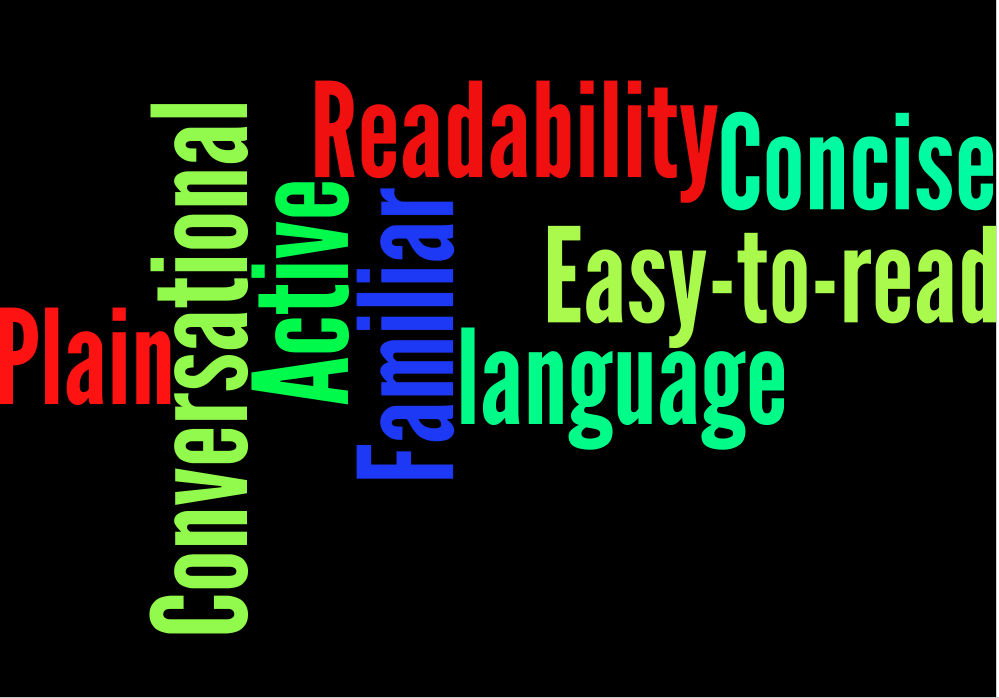 What better day than International Plain Language Day (Oct. 13) to talk about getting rid of jargon and wordiness?
What better day than International Plain Language Day (Oct. 13) to talk about getting rid of jargon and wordiness?
Plain Language Day is a way to let people know that plain language doesn’t mean “dumbing down” material or making it too elementary, a worry a client once shared with me.
Instead, think of plain language as being kind to your readers. Plain language makes your writing more conversational, concise and easy to read. You’ll get complex ideas across quickly, making it easier for busy people to skim it and still understand. You’ll also spend less time trying to explain or correct misunderstandings.
Here’s how to avoid three of the worst crimes against plain language, with advice from the experts:
1. “Omit needless words.” – Strunk & White, The Elements of Style
2. “When there is a choice of words, prefer the short to the long, the familiar to the unfamiliar.” – The Canadian Press Caps and Spelling
3. “When possible, use the direct and more vigorous active voice.” – The Canadian Writer’s Handbook.
Have you run across any great examples of plain language — or maybe horrible writing that needs it? Tell me about it in the comments! And let me know if you’d like help making your communications more conversational and easy to read.
I shared similar advice in the May 2014 issue of my monthly newsletter, Wordnerdery. Not a subscriber yet? What are you waiting for? |

Trackbacks/Pingbacks